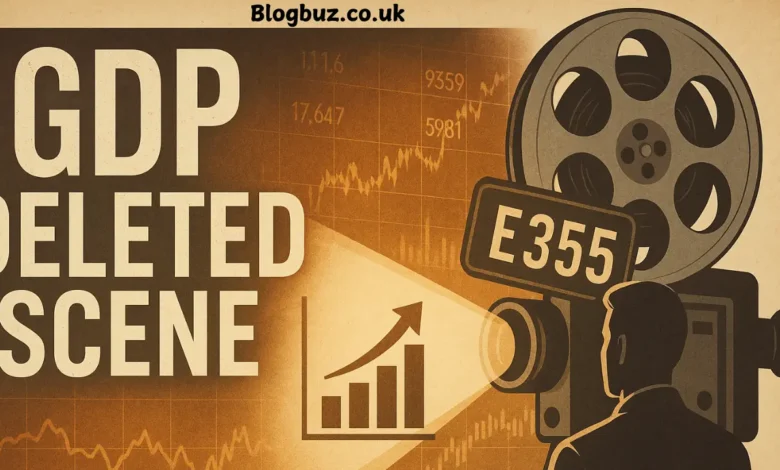GDP Deleted Scene – An In-Depth Look at the Hidden Layers of Economics and Storytelling

The deleted scene from the GDP has recently captured the attention of both economics enthusiasts and pop culture followers. At first glance, it may seem like an unusual combination of words—merging the highly technical economic measure of Gross Domestic Product (GDP) with the entertainment world’s concept of a deleted scene. However, this phrase has grown in popularity due to its unique ability to serve as both a metaphor for overlooked economic realities and as a narrative device in fictional storytelling. In this article, we will investigate the origins, interpretations, and implications of the deleted scene phenomenon in the context of the GDP.
What Does GDP Mean in the Context of the GDP Deleted Scene?
GDP, or Gross Domestic Product, is the total monetary value of all products and services produced within a country during a specific period. It is often used to gauge the health of an economy. However, GDP has long faced criticism for overlooking factors such as environmental sustainability, income inequality, and overall well-being.
In the context of the GDP deleted scene, GDP becomes a metaphor for an incomplete story—one that appears impressive on the surface but leaves important details behind. Just as a deleted scene can alter a movie’s meaning, the economic “deleted scenes” refer to the unrecorded or invisible aspects of economic activity.
The Storytelling Side of the GDP Deleted Scene
In fictional media, a deleted scene is a part of a movie, TV show, or web series that was filmed but left out of the final cut. The GDP deleted scene borrows from this concept, suggesting there are “cut” elements in the economic narrative that the public rarely sees. In specific online communities, particularly fan theory forums, the term “deleted scene” refers to an elusive or mysterious extra scene labeled “E355,” which fans speculate was intentionally removed to preserve suspense or conceal deeper plotlines.
This dual usage—economic metaphor and pop culture reference—has allowed the term to spread far beyond its original circles.
The Economic Metaphor Behind the GDP Deleted Scene
Economists who use the GDP deleted scene metaphor are suggesting that GDP alone does not provide a complete picture of an economy. These “deleted scenes” might include:
- Environmental degradation is not reflected in GDP numbers.
- Informal economic activities like barter trade or unpaid labor.
- Social costs such as mental health issues caused by overwork.
- Wealth distribution disparities are hidden beneath a high GDP figure.
For example, a country could show GDP growth due to industrial expansion while simultaneously destroying forests and polluting rivers. These environmental costs are not subtracted from GDP, making them the “deleted scenes” of the economic story.
GDP Deleted Scene in Fan Theories
Some fan communities treat the deleted scene from the GDP—especially the mysterious E355—as part of a fictional universe. Here, GDP may be the title of a series or project, and the deleted scene represents hidden knowledge, unrevealed character arcs, or alternative endings. Fans speculate about why it was cut:
- To avoid revealing too much about a main character’s past.
- To hint at future plot developments.
- To create viral engagement by leaving something unsaid.
These discussions mirror how economists feel about hidden data—what’s removed may change how the entire story is perceived.
Why the GDP Deleted Scene Resonates
The reason the deleted GDP scene has become a widely discussed topic is that people naturally want to hear the whole story. Whether it’s a missing scene in a movie or unreported data in economics, there’s an irresistible urge to uncover what has been hidden.
From an economic standpoint, many argue that our reliance on GDP without considering these “deleted scenes” can lead to misguided policy decisions. From a storytelling perspective, leaving out a key scene can fuel endless fan speculation—sometimes intentionally, sometimes accidentally.
Criticisms and Challenges of the GDP Deleted Scene Concept
While the GDP deleted scene metaphor is powerful, critics note a few challenges:
- Ambiguity: Without context, the term can be confusing to those who perceive it as purely a pop culture reference.
- Measurement Issues: Even if we identify the “deleted scenes” in economics (like unpaid labor), it’s difficult to measure them accurately.
- Over-interpretation in Media: In entertainment, not all deleted scenes carry deeper meaning—sometimes they’re just cut for pacing.
Despite these criticisms, the term remains an engaging way to spark discussions about what’s missing from our understanding of both films and economies.
How Policymakers Can Address the GDP Deleted Scene Problem
If we treat the GDP deleted scene as a serious economic critique, there are ways to address it:
- Include Well-Being Metrics – Supplement GDP with measures like the Human Development Index (HDI) or the Gross National Happiness (GNH).
- Value Environmental Assets – Incorporate “Green GDP” calculations that account for environmental damage.
- Track the Informal Economy – Improve surveys and reporting methods to capture non-traditional economic activity.
- Promote Income Equality Analysis – Present GDP alongside Gini coefficients and other inequality metrics.
By adding these elements back into the “main story,” policymakers can make more informed decisions.
The Cultural Crossover of the GDP Deleted Scene
What makes the GDP deleted scene fascinating is that it exists in two worlds at once. In pop culture, it’s a fun mystery for fans to unravel. In economics, it’s a metaphor for incomplete data. This crossover reflects our modern information environment, where concepts can rapidly move between entertainment and serious academic discourse.
We’ve seen similar examples before—terms like “Easter egg” started in video games but are now used in politics, literature, and marketing. The deleted scene from the GDP is following a similar path.
Conclusion – Filling in the Blanks of the GDP Deleted Scene
The GDP deleted scene is more than just a quirky phrase—it’s a reminder that what we see is not always the whole truth. Whether it’s an economic statistic that ignores environmental costs or a scene cut from a movie to keep audiences guessing, the missing pieces often hold significant meaning. By recognizing and analyzing these “deleted scenes,” we can gain a richer, more accurate understanding of both the stories we consume and the economies in which we live.
You May Also Read: FintechZoom.com Asian Markets Today: Real-Time Insights, Trends & Market Analysis




